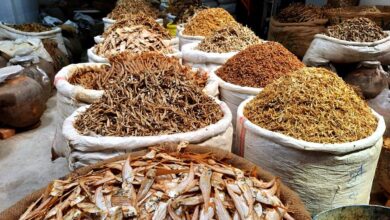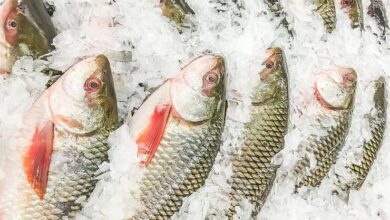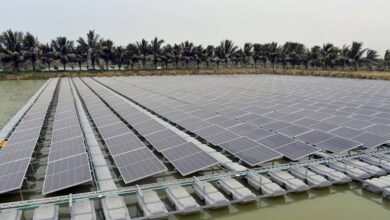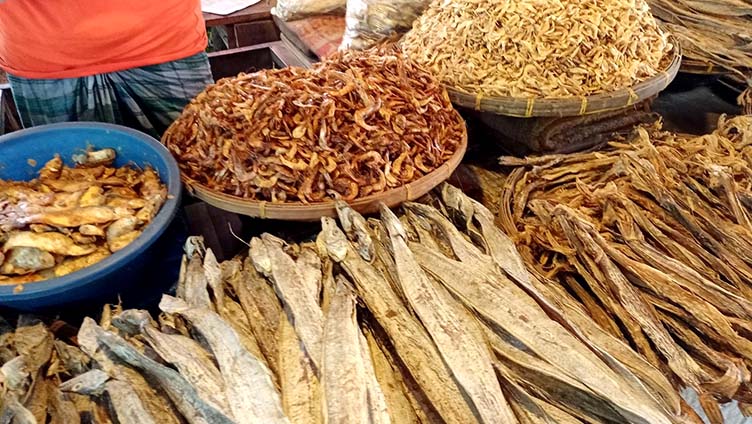
Fish must be preserved for future use because it is an exceptionally perishable food item. The Bangladeshi farming community is renowned for its rich practice of drying fish in the sun, which consumers can enjoy as the name of “Shutki”.
Bangladeshi people consume a lot of dried fish in their diet. It makes up the fourth-largest portion of all fish consumed and is the variety of fish that is cheapest for customers of all income levels.
Currently, 20% of Bangladesh’s 0.6 million tonnes of marine catch is preserved as dried fish for subsequent use and exports, bringing in about $2.5 million annually. The primary marine and freshwater species that are dried include Loitya (Harpodon neherius), Chhuri (Lepturacanthus savala), Punti (Puntius sarana, P. stigma), Chapila (Gadusia chapra), Lakhua (Polynemus indicus), Rupchanda (Pampus chinensis), and shrimps (Metapenaeus species and Penaeus species).
However, in Bangladesh, fish are mostly sun-dried, exposing them to environmental pathogens and pollutants. Furthermore, dangerous chemical pesticides are frequently used to protect dried fish from flies, beetles, and other insects.
The biggest issue with sun drying is inefficiency, and the end product’s quality. The dried product suffers from several drawbacks when improperly sun-dried. Under bad operational conditions (rain, gloomy weather, lack of sunlight, etc.), sun drying takes several days, affecting the quality of the final product; And the chance of contamination with dust or sand or insect infestation is significant. A major concern is the excessive use of pesticides by certain farmers to minimize insect infestation, which eventually degrades the quality of the product and endangers human health.
The open-air drying process relies solely on sunshine and is undeniably primitive and vulnerable to unexpected rain or storms. Traditional sun-drying uses a lot of salt for long-term preservation and weight advantage, but it is also unhealthy for human consumption.
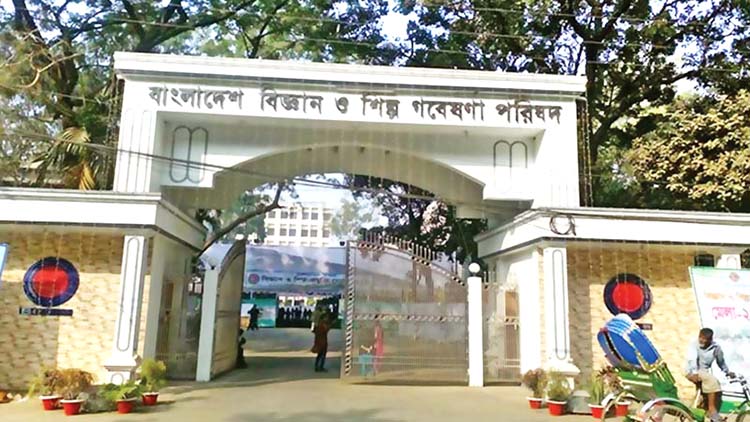
The situation is now changing, thanks to the Bangladesh Council of Scientific and Industrial Research (BCSIR, also known as Science Lab), as they proposed a safe method of drying fish.
With their newly invented method, most of the problems of sun drying may be solved in the dehydration process since drying is done in a controlled environment, and the desired quality of the finished product can be maintained. Dehydrated goods have a longer shelf life than sun-dried goods.
BCSIR experts also showed UV exposure light, which all dryer-dried fish pass through, significantly lowering the danger of diseases or germs.
BCSIR experts expect that if companies involved in dried fish manufacturing start using commercial fish dryers, Bangladesh’s name will be added to the list of the highest-ranking dried fish export country, which includes Vietnam, Ecuador, and India.
“The taste of fish would remain intact if fishermen preserved dry fish using the new methods and without harmful chemicals. This is increasing the popularity of dried fish among individuals of all financial backgrounds,” said Cox’s Bazar district fisheries officer FM Khalequzzaman.
A sophisticated drying facility costs Tk 17 lakh (USD 17000), but the return is worth the investment. According to BCSIR experts, if Bangladeshi dried fish manufacturers use dryers instead of sun drying, their dried fish production costs will be cut in half since dryers require less labour, no pesticides, and are faster and more hygienic.
Dry fish export possibilities are not brand-new ideas, and Bangladesh already exports a few different types of dry fish to the US, the UK, and Middle Eastern nations. During the production peak, Cox’s Bazar’s Nazirartek Shutki Palli employs at least 20,000 people. Therefore, the dried fish industry generates both foreign income and work prospects. However, this industry has not developed as much as one might anticipate.
As a result, there appears to be a large need for dried fish both domestically and overseas, as well as a potential market for it, but Bangladesh produces far less dried fish than is required to satisfy domestic demand. In reality, it’s just around 70%, with the rest coming from Myanmar, Pakistan, and India imports.
The difficulty may be overcome with the right supervision and investment and the proper use of drying facility. The time has come to take a closer look at this industry and require the necessary backing from the government.
Jaber Bin Abdul Bari
Department of Oceanography, NSTU

